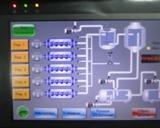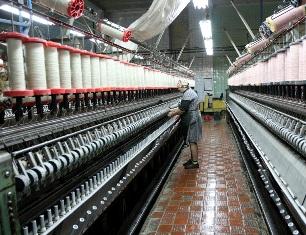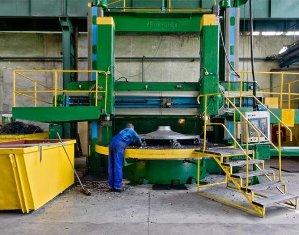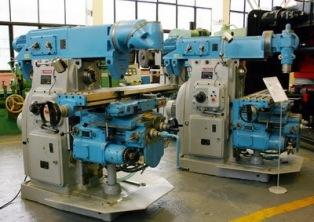Regulation of electricity consumption in industrial enterprises
 The rationing of electricity consumption in enterprises is used to solve important problems in the operation of electrical equipment, which can be conditionally divided into two groups:
The rationing of electricity consumption in enterprises is used to solve important problems in the operation of electrical equipment, which can be conditionally divided into two groups:
1) forecasting the energy consumption regimes of the enterprise as a whole or of a separate workshop (facility, production), preparation of electrical balances;
2) control of the efficiency of electricity use in a specific technological process, on a piece of equipment, etc.
It is necessary to distinguish between the concepts of specific electricity consumption per unit of production and the rate of electricity consumption.
Under specific consumption w will be understood as the actual received value of electricity consumption for a unit of production or technological operation, determined by the formula: w = W / M, where W is the actual electricity consumption for the production of products in the amount of M (the quantity can be measured in different units).
Electricity consumption rate (electricity consumption) — an average calculated value, usually set by the directive and used to forecast or analyze energy consumption, as well as to encourage energy conservation.
Specific electricity consumption and tariffs can be calculated in kind (for 1 ton, 1 m3, 1 m, for a pair of shoes, etc.) and in value terms (per ruble sold or gross product).

Value values are often used for multi-product industries where it is difficult to develop a norm for each type of product. However, electricity consumption is not necessarily proportional to the price of the product. Moreover, in the conditions of currency volatility, these values will constantly change. Therefore, it is preferable to calculate the specific electricity consumption in physical terms.
Depending on the purpose of calculating the rate of electricity consumption, they are divided into:
-
by the period of validity (annual, quarterly, monthly, etc.);
-
by the degree of aggregation (individual, group);
-
by the composition of the expenditure (technological, general production).
It is necessary to clearly distinguish which type of norms to use in each specific case, since the method of calculation, its results, ways of using the obtained norms depend on this.

We call individual the norm of electricity consumption for the production of a unit of production (work), established by types or individual units (technological schemes) in connection with certain technological conditions.Example: the rate of electricity consumption for annealing forgings in an extrusion furnace in an engineering enterprise at a given temperature and annealing time is 260 kW • h / t.
The group is the norm established for a group of enterprises in the industry for the production of a unit of the same product (work) under standard production conditions. Such norms were developed mainly in a planned economy: enterprises should strive to achieve these progressive indicators. Factories exceeding established indicators are considered to be lagging behind and operating inefficiently.
For example, the directory contains the planned norms of electricity consumption for different types of products (data from 1978): the average norm for the production of chemical fibers is 5017.9 kW • h / t, while the norms for some types are highlighted: viscose silk — 9140 , 7 kW * h / t, acetate silk — 6471.6 kW • h / t, triacetate silk — 7497.2 kW • h / t, chlorine silk — 2439.4 kW • h / t, viscose staple — 2429.9 kW • h / t, etc. It can be noted that the norms for individual species differ significantly from the average norm.
A technological norm takes into account the consumption of electrical energy for the main and auxiliary processes of production of this type of product (work), the consumption for maintaining technological units in hot standby mode, for their heating and start-up after current repairs and cold downtime, as well as technical unavoidable losses of electricity during the operation of the equipment.
General production standards — general standards for shops and general installations, which include electricity consumption not only for technological processes, but also for auxiliary production needs (heating, ventilation, lighting, battlements, chairs, etc.), as well as losses in electrical networks (respectively, in the store or for the enterprise as a whole). Naturally, the general production standards are higher than the technological ones and differ due to the characteristics of the enterprises.
Usually, enterprises can produce several types of basic products. In such cases, the specific electricity consumption of the entire installation is calculated for each type of product separately.
For example, in ferrous metallurgy enterprises, specific costs are allocated for cast iron, martenin and converter steel, electrical steel, rolled metal, etc.) Part of the consumption of electricity in auxiliary units.
To solve the issues of energy saving and forecasting energy consumption in enterprises producing more than one type of product, you can also use the concept of electrical capacity of the main type of product, when all the annual electricity consumption of the enterprise is due to the production of this type products Mosn: E = Wyear / Mosn
It is assumed that the other types of products are produced by the enterprise for the further production of this main product type, therefore the consumption of electricity for their production is included as a component in the electrical capacity of the main product (e.g., for ferrous metallurgy, for this type of products are accepted rolled products).Indicator of electrical capacity — the largest of all standards for electricity consumption.
It should be noted that in each enterprise, under unchanged production conditions, unit costs at each degree of aggregation change insignificantly, i.e. have a certain stability in the conditions of specific production. This allows them to be used in solving the aforementioned problems with the operation of electrical equipment. However, for different tasks, norms with different degrees of aggregation and validity period should be used.
In order to predict the energy consumption of enterprises or individual workshops, the extended general production standards should be applied at the corresponding level or the electrical intensity of the main type of product (to predict the energy consumption in multi-production industries, the concept «Virtual capacity» is also used », which we will not dwell on here). The standards for individual industries and units should be used to solve energy saving problems.

